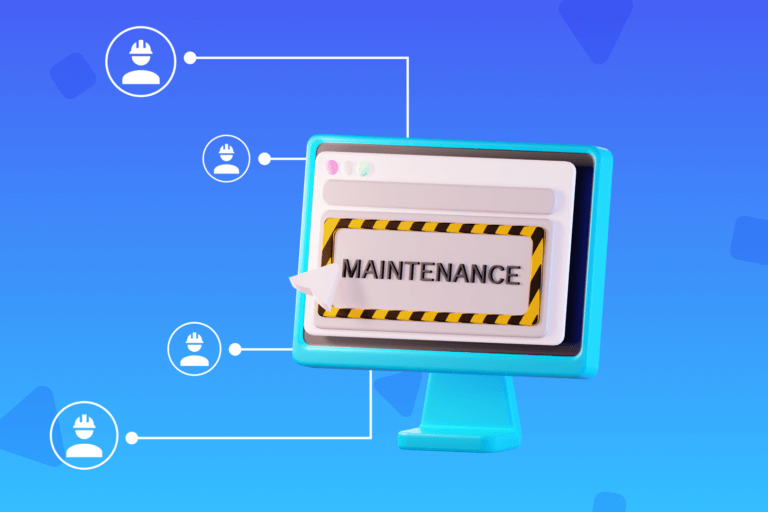All equipment requires some periodic maintenance to run efficiently and ensure each component is able to meet its design life expectancy. Planned maintenance optimization is the method of improving maintenance strategies based on existing preventive maintenance routines. In general, maintenance is defined as efforts taken to keep the condition and performance of a machine always in operating conditions. Maintenance is about evaluating the condition of components to determine whether they need to be repaired or changed.
The correct maintenance strategy will minimize repair costs, downtime and will provide a safe and healthy environment. Benefits of optimizing a maintenance strategy include extending asset life, reducing asset failures, minimizing repair costs and improving health and safety. How do you start your maintenance strategy? The first step is to identify its strengths and weaknesses. Here we have selected few tips that could be very helpful to optimize your maintenance strategy.
Document maintenance activities
Keeping a record with all your maintenance tasks, activities, repairs, and information in CMMS software is the first step when you are just starting out. You can neither measure nor optimize anything until you have some data to measure and analyze it.
Documenting the condition of your assets and the maintenance tasks enables you to identify opportunities for improvement and, thereupon, increase efficiency.
Monitor highly critical assets
Assets that have high consequences of failure are considered highly critical assets. Monitoring their condition continuously, with a predictive maintenance plan, can protect them and predict failures. Assets of low-to-mid-level criticality should be monitored with preventive maintenance. A run-to-failure strategy (reactive maintenance) can be used for assets that are not considered essential.
Plan ahead
Preventive maintenance tasks are a good start, but planning is also a good way to avoid issues that can stop your regular processes. Your plan should include everything from scheduling to staffing, from purchasing to asset disposal. A business goal without a plan is just a dream. So. If you still have a plan for your maintenance optimization strategy, it is the time to start on.
Keep maintenance track
When you have many assets then it becomes a bit chaotic to maintain track of maintenance. If maintenance is not planned it can go over your budget. To avoid these issues, you need to keep track of maintenance. At present, you can find many software in the market. Our software DataScope is the ideal tool that can help you to record all the information required to keep full control of your operations. All data collected through our platform can be automatically added to any other integration-capable system.
Invest in maintenance software
For an effective maintenance management strategy, investing in an appropriate software is essential because can benefit your business in many ways. It will keep track of your maintenance tasks and alerts you when something need to be done. Furthermore, a software will plays a crucial role in boosting the performance of assets, increasing productivity, and keeping track of your assets lifecycle.
It will also provide detailed reports that will help you take decisions based on facts and numbers and could reveal errors so you can tackle and amend them easily. Managers can analyze data, and identify maintenance patterns. By using a software, you will have a detailed list of each asset and equipment and you could plan the maintenance of each asset according to that list.
Move to automated process
For effective maintenance, the pen and paper method needs to get out of your organization. Why? Because it is prone to error and can leads to wrong judgment. You can use a spreadsheet for collecting data; unfortunately, this tool will not let you know if any other user make changes because it has not been designed for asset management. Furthermore, there are also chances of human errors.
A CMMS software can automate tasks such as data entry, email, request approval, so you can focus on things that are more important.
Identify and address risk areas
You can identify current and potential areas of risk by reviewing failure modes and make adjustment to existing maintenance plans. By doing maintenance optimization, you can reduced risks easily. The key is using a structured approach. Most companies prefer a combination of predictive, preventive and reactive maintenance strategies for best results. When implementing a maintenance strategy, it is important to have a computerized maintenance management system (CMMS) or enterprise asset management (EAM) software solution in place to track schedule and tasks.
Make resources easily accessible
To improve your maintenance strategy, keep the elements your team needs (historical records, part information, vendor contact details, manuals, etc.) in easy-to-find places, like your CMMS database. By doing this, you will save time, money and resources and will be able to tackle issues before they become a serious problem.
Train your staff
Training is the fastest way to improve your maintenance team’s efficiency and get the best return on investment (ROI). Moreover, do not forget about training yourself as well. The payoff is far greater than the cost. Maintenance training, developed and implemented properly, can help companies to save money, increase product quality, and improve employee morale. The training must be focused to give results as quickly as possible but also must be in accordance with your long-term goals.
Get feedback
Getting feedback from your team can bring many benefits such as actions to remove repeat failures or actions to improve health and safety. To ensure the feedback is effectively gathered and addressed, you need to have in place a systematic process. Your people should value the work instructions. If all value the process, improvements will increase.
Emphasize preventive maintenance
Preventive maintenance is important not only for assets and for equipment but for your organization in general because it takes care of your assets proactively, decreases downtime and increases equipment efficiency.
Preventive maintenance is essential for any maintenance management strategy. According to Statista, “Most commonly deployed maintenance strategies in the manufacturing industry worldwide from 2017 to 2020. As of 2020, 76 percent of the respondents reported following a preventive maintenance strategy, while 56 used reactive maintenance (run-to-failure).”
Maintain assets and equipment list
Maintaining an asset list is important for your business. It lets you know how many assets you have and how to plan appropriate maintenance strategies for each asset. You can also know where assets are located and schedule maintenance according to the priority of the asset.
Create a checklist for every maintenance work order
Maintenance technicians have so many tasks in hand they forget basic activities. That is why it is important to maintain a checklist for each work order. This way, technicians will know which specific tasks they need to do and will not forget their usual activities either. Checklists can help keep your maintenance team organized making sure that different departments do not skip any step in the business process. They can keep track of all tasks, improving productivity because no tasks will be forgotten.
Improve work processes
Operating practices are an essential part of any preventive maintenance program. Good practices prevent failures and must be implemented to improve overall plant reliability. It is important to explore each phase in detail, as some processes may contain sub-phases that you are not aware of. Sometimes you will need to redesign some processes to eliminate the problems you have identified.
Build a strong relationship with your team
To achieve maintenance excellence, you need to build an excellent relationship with operations. This means having maintenance in full alignment with the larger goals of your operations team and your company.
Use a failure reporting and corrective action system (FRACAS)
A failure reporting, analysis and corrective action system (FRACAS) is a quick approach to optimize maintenance programs and does not require extensive planning and decision-making to assess a PM program. FRACAS is a system that establishes procedures for reporting, classifying, analyzing failures, and planning corrective actions. It identifies failure causes and help organizations implement the best solution to prevent or predict the issues from occurring repeatedly.
Benefits of maintenance optimization
Some of the major benefits of predictive maintenance are:
Reduce unplanned failures
They are costly, frustrating and unpredictable situations that can affect your organization. There are both intangible and tangible costs associated with this scenario. The true cost of unplanned failures depends on variables like the size of your company, the complexity of your systems and the length of the outage.
Minimize maintenance costs
You can reduce capital expenditures by balancing maintenance practices to avoid over-or under-maintained assets. By predicting the failure of any asset you can prevent costly unexpected downtime.
You will not waste time on unnecessary maintenance tasks
Through the optimization process, you can eliminate redundant and unnecessary maintenance activities, making sure your team focus on what is important. You will outline the proper maintenance tasks, schedules and personnel assignments and plan the best way to carry on the strategy.
An optimized maintenance strategy will save time and resources including reducing the hidden costs of insufficient maintenance (production downtime, risks to personnel or equipment, etc.).
Do you want to improve your company’s services of maintenance? DataScope is the ideal tool for managing equipment installation and maintenance services, providing increased productivity to your workforce.







